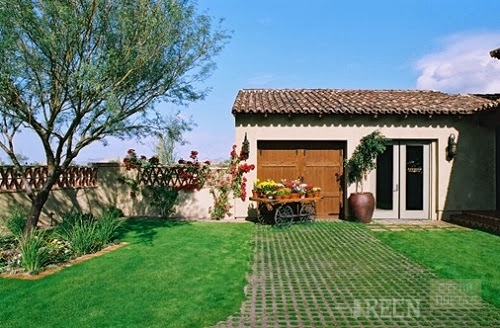
Garden tracks from plastic with their own hands Plot
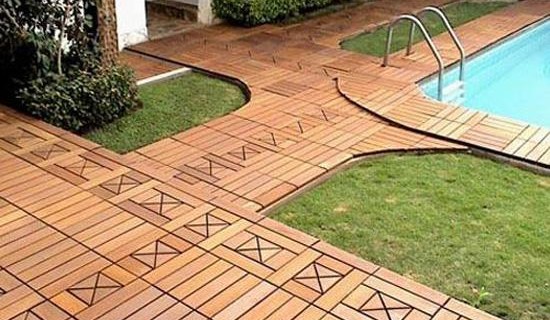
Each person seeks to fit the surrounding space with maximum comfort. The tracks are considered an integral element of the country area. They help keep it in order and give it a neat and well-groomed look. Modern materials make out without much effort to create a beautiful path with their own hands. These include plastic tiles for tracks that combine the aesthetic appearance and practical properties necessary for structures of this type. In addition, the flooring from the module for many dachensors are the most economical option in the arrangement of the site.
Content
Plastic tracks - types
There are several types of garden lanes from plastic:
- garden parquet;
- modular coatings;
- lawn grille.
Garden parquet
Material of manufacture
For the manufacture of wood-polymer garden parquet (DPK or Decking), a homogeneous mixture of polyvinyl chloride and wood flour is used. Properties of material:
- not exposed to the process of rotting;
- has high strength;
- moisture resistant;
- easy to care.
The percentage of wood in deconge varies from 50 to 80%. The more, the more its appearance and characteristics resemble the usual parquet. Liquid wood - so sometimes referred to as the material for its plasticity and similarity with natural wood.

Design of garden parquet
Externally, garden parquet very much resembles a flooring. It consists of longitudinal planks forming sections or tiles. They are fixed together both in parallel and longitudinally - thus creating a different pattern.
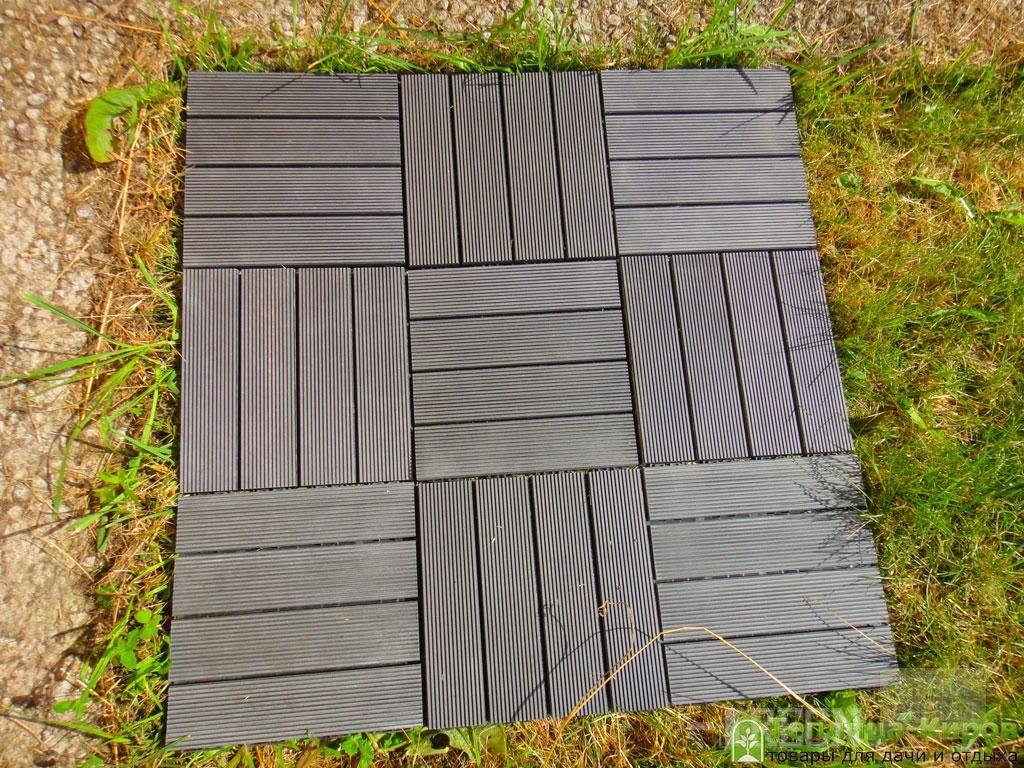
Each plastic tile for garden tracks consists of an outer part and a substrate. The latter is designed for air ventilation and moisture drainage. It is made in the form of a grid and is equipped with a fastening system, thanks to which the sections are connected.
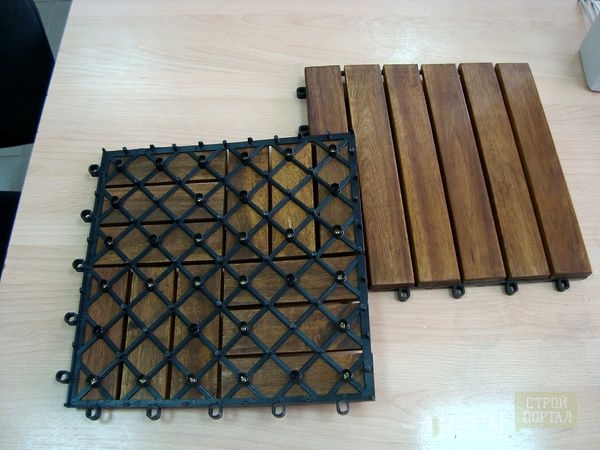
In addition, there are special gaps in the tiles, a width of 1 to 8 mm wide, designed to provide ventilation. When choosing a decon to cover the tracks, the level of humidity is taken into account in the location of their location - the width of the slot depends on this indicator.
Preparation of the foundation
We can lay garden parquet on any basis:
- board coating;
- concrete;
- ceramic tile;
- squeeze from rubble or gravel;
- priming.
The main thing in the preparation of the coating bed is to create a relatively smooth surface, the differences on which will not exceed 5 mm per square meter. Not suitable for laying decoing sand pillow. Putting into it, the modules will fade, and the track will become uneven. The soil should also be dense enough, otherwise after the rain it softens, and the tile will plunge into it. Therefore, it is better to make a gravel snowing of a small thickness - a few centimeters will be enough for a pedestrian path.
Mounting
Installation of garden parquet is very simple:
- The tiles are joined and fasten with the help of lock connections.
- Mixing parts of the parquet are trimmed with a regular saw.
- If the platform with a slope, the installation begins with its top.
- The direction and styling pattern is selected in the course of operation - thanks to the symmetrical mount, you can create a different pattern.
Decorative modular coatings

The modular form plastic for the tracks is the most economical option of covering paths. They are structures that can be collected immediately after the acquisition and have certain advantages:
- ease of installation;
- low cost;
- large selection of forms and color schemes;
- the ability to dismantle and transfer to another place;
- excellent drainage properties;
- resistance to temperature drops;
- mechanical strength.
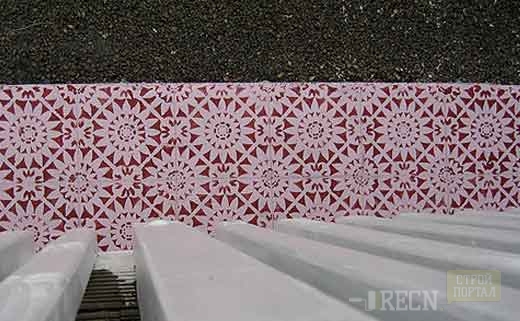
Preparatory work
The base for plastic coating does not require special preparation. It is placed on any old coating or sand or gravel pillow. Order of work:
- removal of the upper layer of the soil;
- failure to the sand layer trench 10 cm thick;
- moisturizing sand and its rambling;
- alignment with a level.
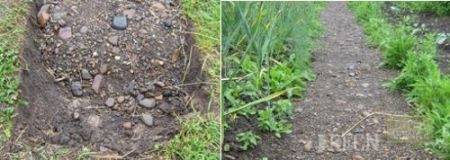
Mounting
Mounted plastic paths for giving very simple and fast:
- the foot of the lock on the module is entered into the bracket on another element and presses until it clicks;
- if necessary, the edges of the structure are adjusted, while the electroll q and another cutting tool is used;
- plastic garden tracks are evenly tamped into the base;
- garbage and sand from the surface of the coating is removed.

When breakdown, a separate module is easily replaced, especially if it is with the edge of the design. Plastic garden tracks can be used inexpensively, but if you care for them, they will serve not one year old.
Lawn grille
Lawn garden tracks from plastic - grilles with cells of various shapes. Thanks to its design, they strengthen the lawn and it is possible to go on it without risk to spoil the appearance of the green coating.
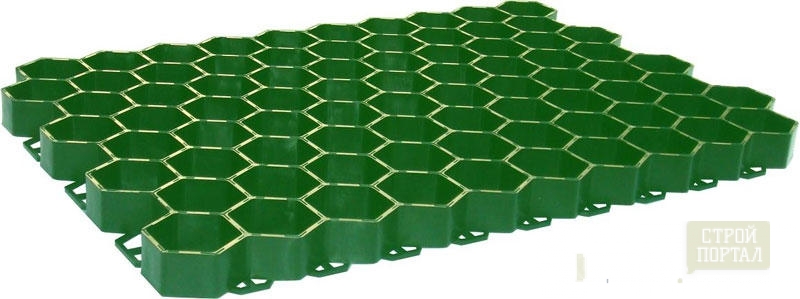
Preparation of the site
To prepare the base under the lawn lattice, the following actions are performed:
- sampling;
- failure of trench gravel - 15-20 cm;
- laying geotextile;
- floasing the leveling layer from sand - up to 3 cm.
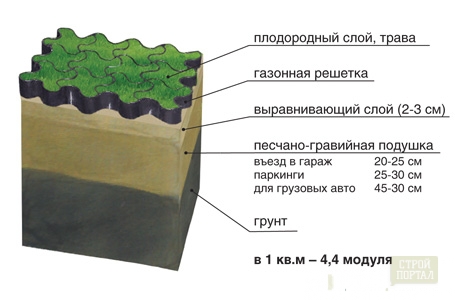
There is a gas plate for tracks, which is placed directly to the soil, without the preparation of the base. But the price of such a lattice is higher than that of the usual design.
Laying lawn lattice
- On the prepared "Lodge" in checkers or rows the lawn lattice is stacked.
- Cells fall asleep with a fertile layer of land and poured with water.
- Formed voids are filled with soil with grass seeds.
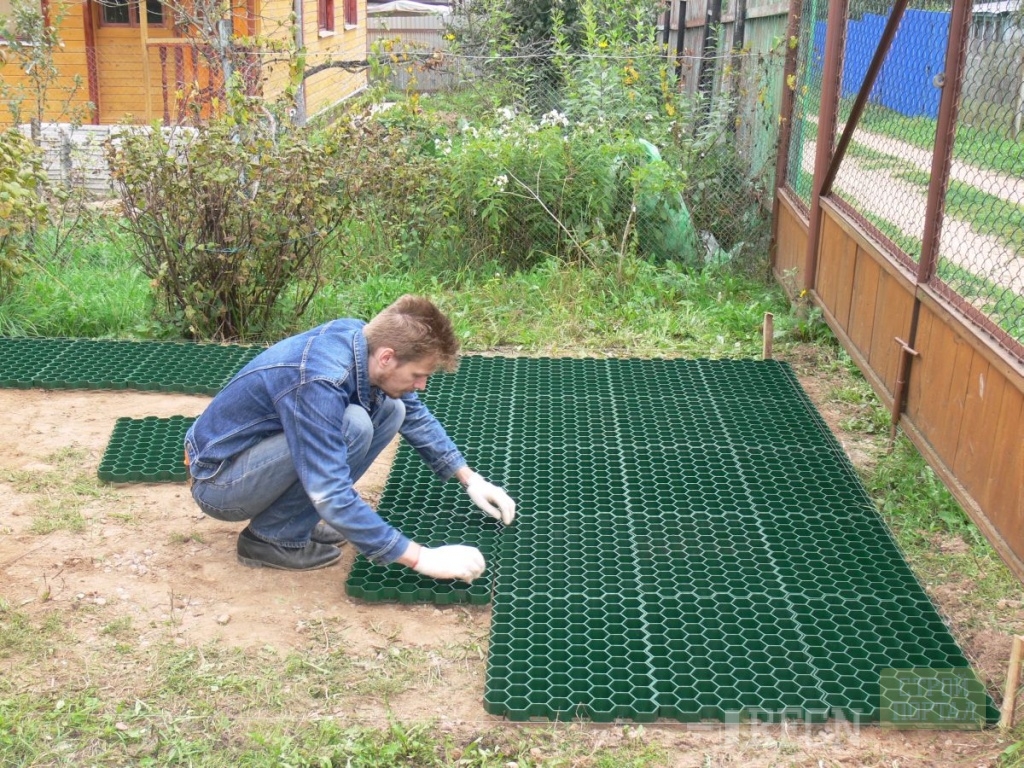
The design is regularly watering, and the plants that have appeared are 2-3 times. After these procedures, the lawn track is ready for use.
